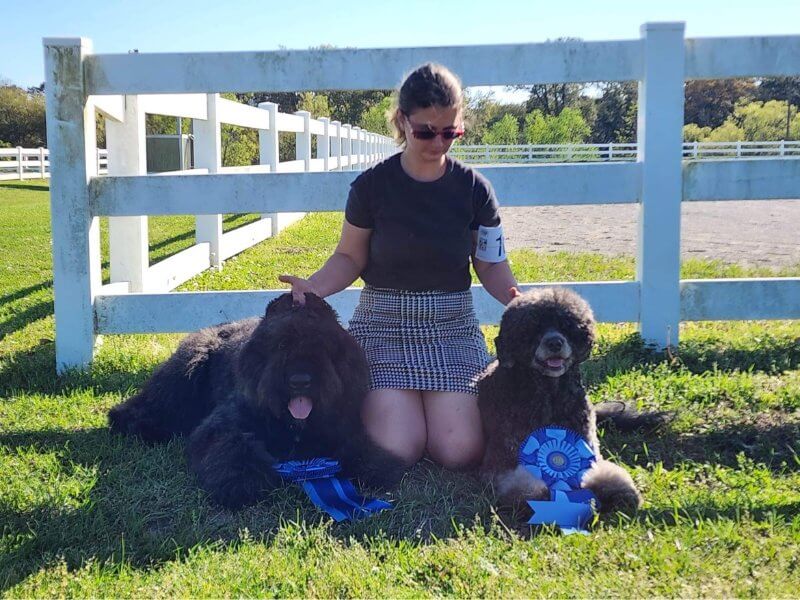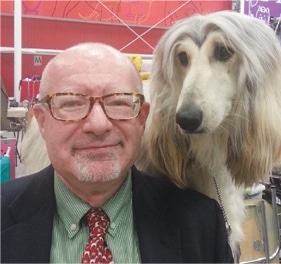Interview with a Professional Handler, Angela Chase, by Allan Reznik
Where did you grow up?
Angela Chase: I was born in Arlington Heights, Illinois, then my family moved to Apex, North Carolina, and finally settled in Lancaster, Pennsylvania, about 20 miles from the famed Greenfield Kennels in Bowmansville, Pennsylvania. I was training for figure skating while living in Apex, but when we moved north, the training programs were just not there. Also, it was quickly evident that my health was going to hinder me at the competitive levels of figure skating, and I needed to find a new pastime. I didn’t get involved in dogs until moving to Pennsylvania, but was lucky to have great mentors right off the bat who opened doors to many wonderful opportunities.
Do you come from a doggie family? And if not, how did the interest in breeding and showing purebred dogs begin?
Angela Chase: I did not come from a dog preservationist family. When I was younger, I was deathly fearful of dogs, so my father got a Basset Hound to bombard me until the fear of dogs went away. One day, while recovering from one of my surgeries, I was watching the old Kennel Review Tournament of Champions on Animal Planet and said, “Daddy, I want to do this.” The good thing was that we lived in the Mid-Atlantic, so there was usually a dog show within a three-hour drive. I kept pestering him and he finally took me to the Lancaster Kennel Club shows in Lebanon, Pennsylvania. I had also been researching breeds that I wanted before we attended the show.
At the show we watched the Groups as well as Junior Showmanship. We also found out that the Lancaster Kennel Club held a local handling class. My father said that if I could train Beau, our oversized, stubborn pet Basset Hound, he would get me my first show dog. Challenge accepted, and I set to work, turning Beau into a Junior Showmanship dog. I had narrowed my breed search down to Beagles and Westies, and after watching someone get a Westie ready for the ring, we settled on a Beagle. After a few months passed, Lilly (Ch. Brushyrun Felty’s Piccalilli) came home to be my first partner in crime.
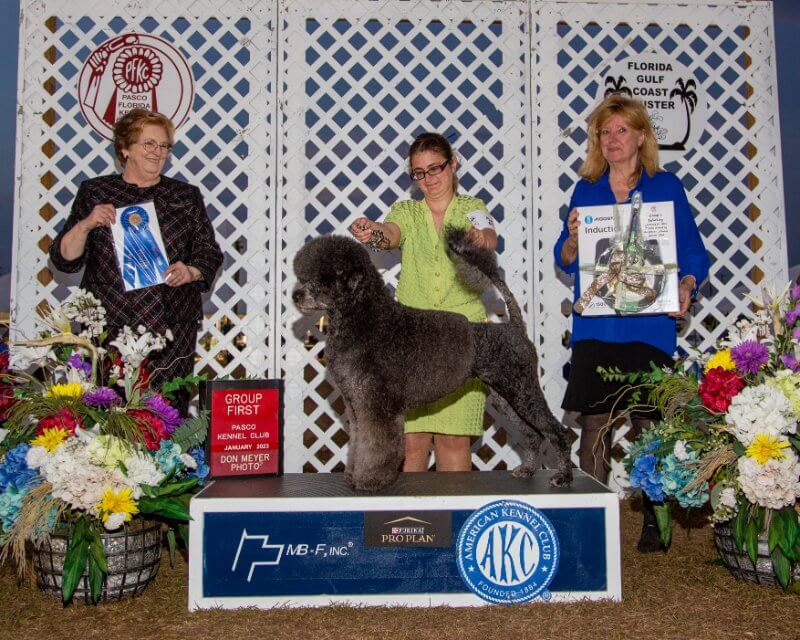
Who were your mentors in the sport? Please elaborate on their influence.
Angela Chase: I’ve had two main mentors who helped me develop my handling career, and several breeders/clients who helped me with breeding decisions. They also helped me to navigate from the first moments in the whelping box, into the show ring, and eventually into the specials ring. I went to handling lessons given by Gail Hillard and Eileen Drescher. There was a six-month span from when my parents got me Lilly, the retired champion Beagle, to when I became old enough for Juniors. The age limit at the time was 10, and I turned 10 when they dropped the age limit to 9. So, I had six months of just going to handling classes and matches before I stepped into a real conformation ring, and you better believe my dog and I were a team.
These two ladies really taught me the foundation of how to stack a dog, move a dog while I “disappeared,” and let the dog be the star. I quickly polished off my novice wins and started to help handlers. I started helping Kim Moshlack when we were at shows together. She threw me into the breed ring with one of her Chows named Bobby and I had won the breed from the classes under Jean Fournier. That led me to working for Heather Bremmer and Kevin Bednar.
After 18 months with Heather and Kevin, I started working for Ernesto Lara at Greenfield Kennels. This is really where my trimming and handling skills took off. Ernesto taught me not only scissoring skills and pulling [hair on] terriers, but also how to fit a trim to an individual dog and how a trim can hide or accentuate different features of the dog. He also taught me how to get into a dog’s head to basically learn to dance with a dog and become a team. He taught me that no two dogs are trimmed or presented the same way, and that the dogs’ care and well-being always come first, no matter how you feel. Let me tell you, there have been some days that it’s been sheer will power to get me through.
Due to some personal issues, it was best that I move back South. So, I decided that I would go to work for CJ and Lisa Favre, of Canine Specialists in Atlanta, Georgia. This started what is now a 10-year relationship, and I assisted CJ until his retirement from handling when COVID broke out in 2020. CJ opened many doors for me. He let me do a lot of the trimming on the dogs, gently guiding me and, if I had questions, would introduce me to the powerhouses of the breed in question for guidance. He also taught me how to run the business like a business, and understand that you have your handler hat and your breeder hat.
During this time, CJ worked for a lot of breeders and finished a lot of class animals. He opened the door to several top breeders, including Elaine Paquette of Quiche Bouviers Des Flandres and Cathy Dugan of Aviator Portuguese Water Dogs. Some of my favorite moments have been dinners with these breeders, discussing how they got the family of dogs that they did and applying those lessons to my own breeding program of Kerry Blue Terriers. The breeding program I have today is attributed to them and the breeders who gifted me my foundation stock. Because of CJ, I also got heavily involved in Portuguese Water Dogs, and truly enjoy the versatility of the Kerry Blue Terrier and Portuguese Water Dog.
Did you participate in Junior Showmanship as well as breed competition?
Angela Chase: Yes, I competed in both Juniors and Breed. First with a Beagle and the occasional Boxer, but most of my later years in Juniors were with a Kerry Blue Terrier. I started in Beagles because they required relatively little grooming, until I got approached by Joy Ellewanger about showing her Kerry, Athena (GCH Adare’s The Right Answer), while she “colored up” to keep her mind in the game.
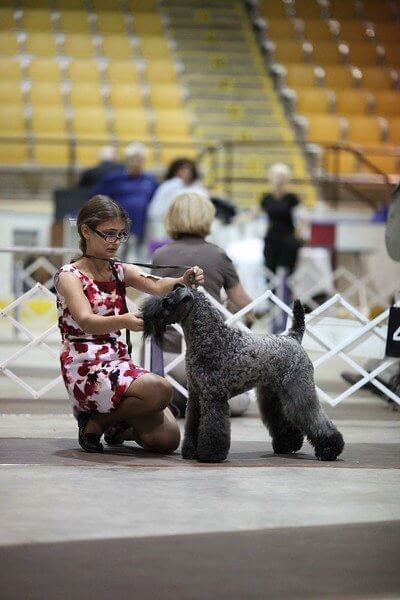
For those who don’t know, the Kerry Breed Standard has a disqualification for any dog over 18 months of age that is not showing signs of changing color to the eventual, final blue. I learned to trim Athena, and eventually co-bred her with Joy to get Zeus (GCH Adare’s Top Hat and Tails), my first Bred-By champion. Zeus went on in his retirement years to help Lexi Schlott compete in Juniors right before I moved to Georgia, and she had a very successful career with him.
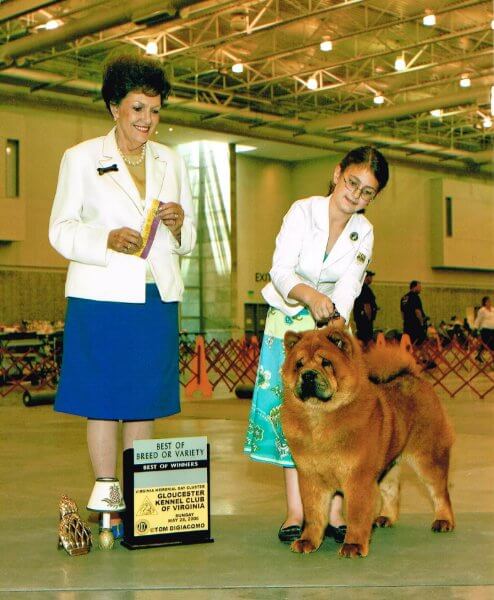
In my later years in Juniors we really focused more on the Breed ring and my budding breeding program. I had qualified for Westminster pretty early in the year and was heavily working for Ernesto Lara during the school year, then CJ Favre over the summer. I also was battling some medical issues, so I didn’t compete every weekend. A Juniors career won’t make you a star, but what you do in the Breed ring and in your own breeding program can. Doing it the right way and training the up-and-coming stars in Juniors earned me a lot of respect from my mentors and peers.
My last year in Juniors I had gone Winners Bitch from the Bred-By class and Best Junior at Montgomery County Kennel Club with Janie (GCH Wildside’s No More Drama). Our National Specialty is always held at Montgomery County and, to me, that was the culmination of my Juniors career.
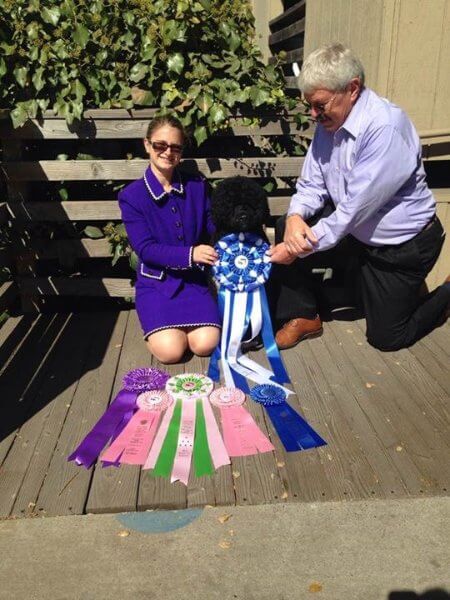
How many dogs do you typically house? Tell us about your current facilities and how the dogs are maintained.
Angela Chase: I call North Georgia home now. The property is just north of CJ’s on 10-1/2 acres in the foothills of the Blue Ridge Mountains. My kennel is a work in progress as we are renovating and bringing the kennel up to date. I live on the property and my big goal is to open a second kennel and training facility. It will have a dock diving pool and be open to the public so that they can condition and train their dogs to perform at their best.
I also love to teach, and feel that there is a great need to teach the bigger picture of dog shows, from preservation breeding in the whelping box to the show ring. Success doesn’t happen overnight and I feel like some people overlook the dedication that some of these teams have put into the breeding programs that their dogs represent. Right now, we house from five to 10 client dogs plus my personal Kerry Blues. Everyone is in a run that is indoor/outdoor. The kennel is designed to be completely washed down with a pressure washer or hose to make it easy to clean with my physical limitations.
A typical day for them is to be out in the morning while I clean the inside part of the kennel and feed. Then I open the doors to the patio and leave them open all day while the weather is nice, so they can enjoy the fresh air and the nature around us. They can lounge in the sun or go inside into the air conditioning at will. The dogs also have access to paddocks and free-play, and I feel that they enjoy romping with their doggie buddies and me. We keep their coats up and try to keep them happy, both mentally and physically.
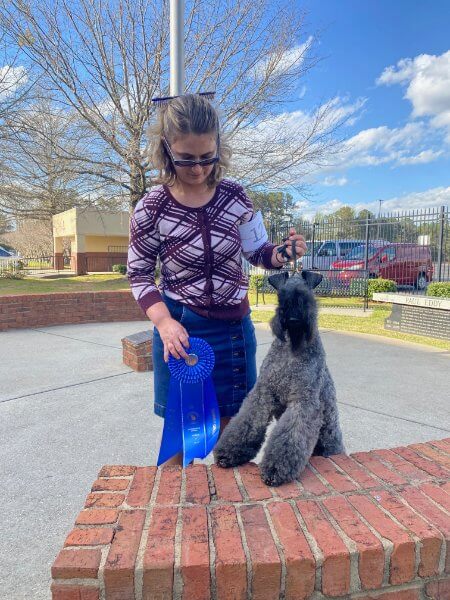
Do you breed and show your own dogs in addition to caring for clients’ dogs?
Angela Chase: I do, but on a very limited scale as it’s challenging to maintain a successful breeding program while being on the road full-time. I also work with a lot of co-breeders. I think this is important as I can guide my clients from both a handler’s and a breeder’s perspective, having been on both sides of the equation.
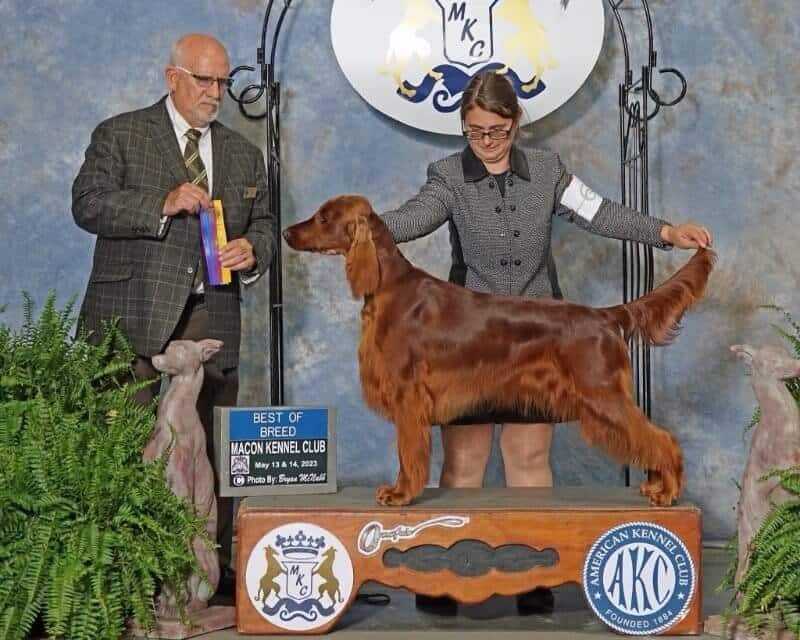
Does every dog you finish go on to be specialed? What does it take to become a successful special?
Angela Chase: No, most dogs just get their championships and maybe their Grand championship, and then go on to do other things. There are many factors other than just being a good dog structurally that go into creating a special. Good conformation is just the tip of the iceberg. They also have to have that spark and “it” factor to be able to show every weekend, as a lot of dogs burn out, especially if they get on a roll at a young age and aren’t mentally ready to be on the road. It’s just as much of a mental game as a physical game. The team must also have the financial commitment from the owners, whether you are on a winning streak or not. Everyone is happy when the team is winning, but the true challenge is to not give up when the team is in a rut.
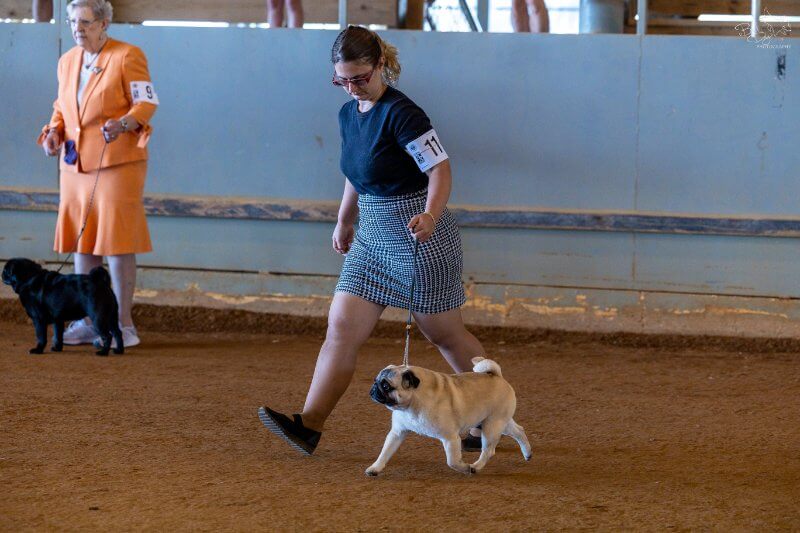
Do you and an owner/client ever disagree on the future of a dog’s show career? How are those discussions resolved?
Angela Chase: Yeah, sometimes we do. I try and be honest with my clients. A lot of times clients try to rush the process in order to save money. I try and give them a timeframe of when we can expect the dog to make some progress when I first see the dog in person. I try and tell my clients to not look at the ribbons, as that is one person’s opinion of the dog on that day, but to look at how the dog is showing. Are they gaining confidence and are they using themselves in the right manner? It is never easy to give a client bad news. I try to be as honest as I can, but sometimes that is taken the wrong way and a client gets offended.
If, in my judgment, the dog should not be shown, I will tell them we could try for a certain amount of shows, or to try and put that money into a better dog that I will help them find. A client is not always able to take on another dog. Sometimes I also struggle with a breeder who can be kennel blind or a client who doesn’t understand the work that goes into maintaining a coated breed, whether it’s a hand-stripped coat or a hand-scissored coat that must be dematted. This is why the breeder, handler, and owner must be on one team, and be on the same page.
Also, there are other conditioning factors that affect the muscles; these can greatly affect how the dog looks. Sometimes fixing those will drastically change the dog’s show career and they are easy fixes. The conditioning aspect of a dog is probably the Number One thing clients and I disagree on.
What do you wish more dog show exhibitors understood about the role of the professional handler?
Angela Chase: First of all, I wish this divide between the National Owner-Handled Series and Professional Handlers would go away. There are a lot of roles a professional handler can play, and they can be a huge asset to a breeding program. A handler can go to shows most weekends and also see dogs in different areas of the country. This is a huge asset when finding breeding stock if the handler knows what they are looking for.
I always tell my clients when hunting for stud dogs that I can help them with the phenotype, but as a breeder they are the ones who must look up the pedigree and make sure it works genotypically as well. This is how a handler gets one good dog after another good dog to show. There are some breeds whose lines I know well enough to be able to do both, but that involved quite a few years in those breeds and showing several generations of dogs for clients.
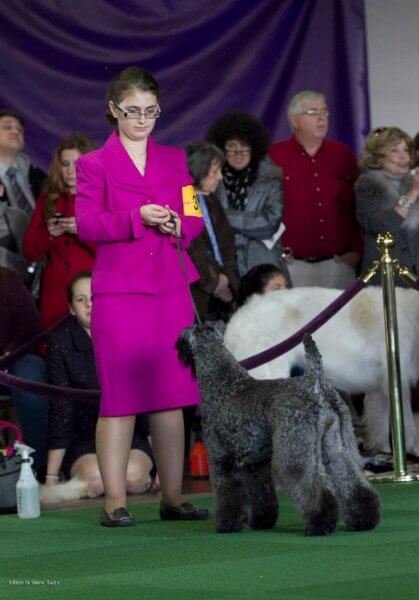
Secondly, some of my clients are not physically able to present dogs of their breeding programs in the best light to not only the judges, but to the fancy sitting outside the ring. Some clients mentally break down if asked to walk in the ring. I have other clients who simply enjoy sitting outside the ring, catalog in hand, looking to see how their breeding program stacks up, and finding new dogs.
Sometimes I wish owners would take a good look at the dog they are exhibiting and the dog the pro is exhibiting. If the owner handler’s dog is not in the same condition and presented as well as the handler’s dog, there is no point complaining, as conditioning and presentation are easy things for judges to fault a dog on.
Finally, I wish exhibitors would realize how much time and energy it takes to get a dog ready for the ring. We are not quick-fix miracle workers, especially if we must work with the dog mentally as well as put in time on coat care and conditioning. We may live in an instant gratification society, but instant success isn’t always possible in the dog game.
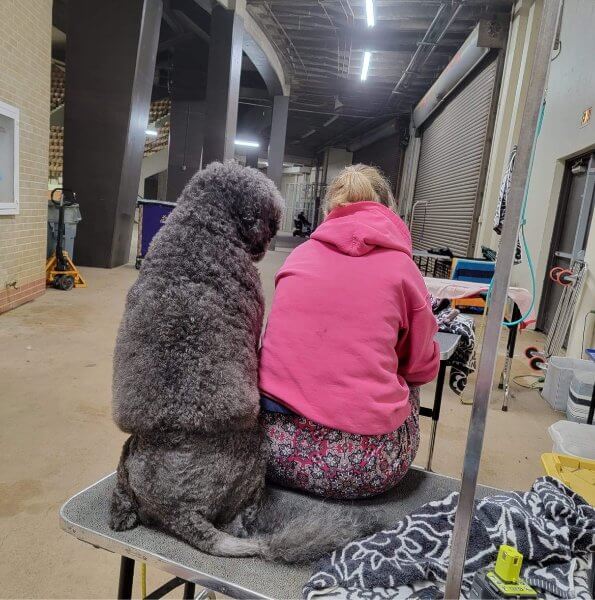
Do you belong to any kennel clubs, breed clubs or dog organizations?
Angela Chase: I do. I belong to the Sawnee Mountain Kennel Club, and will eventually join the Portuguese Water Dog and Kerry Blue Terrier parent clubs once I get a few more things set up with the business. I don’t want to be a member until I feel that I can put time aside to contribute to the clubs, and right now my plate is very full.
How many shows do you attend in a typical year? Do you often fly?
Angela Chase: I try to attend shows two to three weekends a month, and use the other one or two weeks for kennel planning and letting the dogs be dogs at the house. I feel like when we go every weekend, the dogs and I struggle physically. Being on the East Coast, our shows are typically within driving distance, so it doesn’t make a whole bunch of sense to fly. We will usually fly to National Specialties if they are on the West Coast, and I try to make each breed’s National Specialty as I feel this is a huge service to my clients.
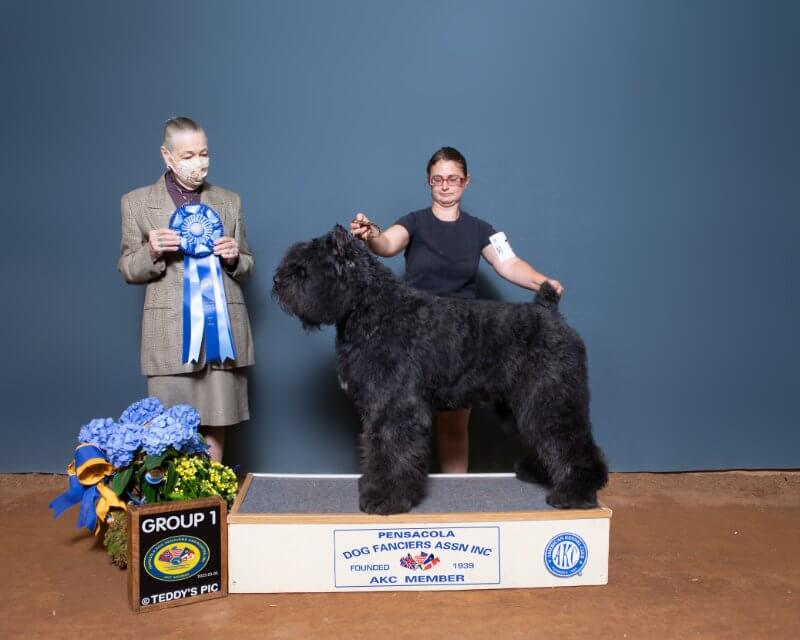
What do you do for fun and relaxation when not attending dog shows?
Angela Chase: It’s very rare when I’m not at shows or working in the kennel, but I do enjoy cooking in my free time, hanging out on my wonderful porch, and also spending time with my boyfriend and family. I also like to fish and head to the beach or mountains for vacation. I am very lucky that there are quite a few day trip get-aways that the dogs and I can enjoy really close to the house.



